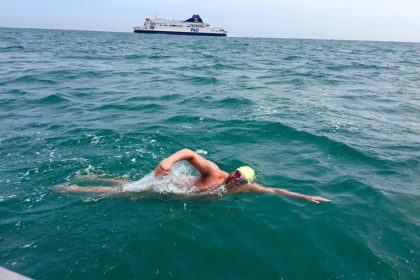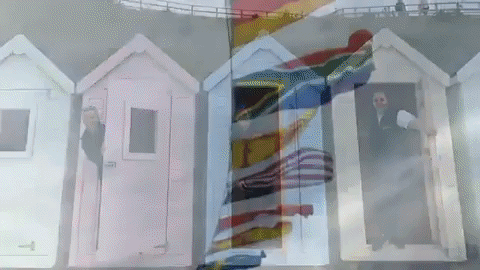
Marathon, open water and ice swimmers have to learn to accept the fact they will feel cold. That’s part of the sport, both during and after the event – an after drop in temperature happens up to 10 minutes post removal from the cold environment, and may be partially accounted for by warming of the new environment (e.g. clothes).
A positive mind set is required when dealing with the cold. Firstly, the question ‘How cold is the water?’ should never been used – positive questions would be ‘How warm is it?’ That, or ‘what is the temperature?’
When swimming I envisage that I am heating the water around me, creating warmth. When asked what is the temperature? My reply is: ‘Tropical’. This is regardless of the actual temperature. A positive mindset helps you to manage the cold.
The first steps are to accept that you may feel cold and accept this. Feeling cold does not necessarily mean you are hypothermic. The peripheries will feel cold first (toes and feet) –this can be worse in people with Raynaud’s phenomenon (blood vessels overreact to cold, shutting down supply and causing excessive pain on rewarming as blood flow recovers) The classic pattern of the extremities is White, Blue, Red (painful) in this condition.
A central thermometer measures core (central) coldness, so a household one generally will not do the trick (measures peripheral temperature). Hypothermia is when:
The Core temperature drops below 35 degrees Celsius (usually it is maintained above 37 degrees Celsius)
Coldwater takes heat way much faster than cold air, but the combination of the two can potentially be fatal. You can minimise the risk of hypothermia by being prepared: acclimatization over time and gradual supervised adaptation, having multiple layers of clothing for post-swim, swim / woolly hat, earplugs etc. Knee-length costumes are considerably warmer than shorter ones in my experience. Avoid alcohol before during and after the swim.
In the absence of a thermometer, a handy tool to remember the stages of hypothermia is:
The “umbles”
From most well to worst state, of note people may not exhibit all of these steps so need close observation:
35 to 32 degrees Celsius
‘Grumbles’: negative mental outlook, maybe shivering
32 to 28 degrees Celsius
‘Fumbles’: fine motor movement lost first – i.e. cannot do buttons or move fingers properly when asked, should be shivering in this state
‘Mumbles’: slurring of words follows; they should be shivering to try to warm
‘Stumbles’: inability to walk unaided is the last step, i.e. loss of gross motor function, they should be shivering.
I think most people have seen people in each of these stages; it may be reasonable to accept reaching the grumbles, mumbles and fumbles if you have been checked out by your medical practitioner and you are experienced and have a re-warming plan. The stumbles and beyond is potentially very dangerous.
Below 28 degrees Celsius is defined as severe hypothermia
‘Crumbles’: below 28 degrees Celsius, the body cannot shiver any more as trying to retain energy, they may lose consciousness as blood pressure drops and heart problems may occur – this is a medical emergency – professional healthcare advice should be sought.
After drop – the core temperature is lowest approx. 6-10 minutes after coming out of cold water – you need to plan for, and reassess for this drop.
First-aid Management of hypothermia can include:
- Moving indoors if possible, or at least shelter from the wind.
- Removing wet clothing and drying the skin.
- Passively reheating with multiple layers of clothing/ blankets, especially feet with socks and head with hat. Also lie on material where possible – i.e. off cold ground.
- Get people to lie next to, but not to massage them. Do not use car heating or hot shower etc. – this may cause them to collapse due to low blood pressure as blood is diverted to the skin and away from major organs too quickly.
- Warm non-alcoholic drinks may be useful and consider further professional medical attention if required.









